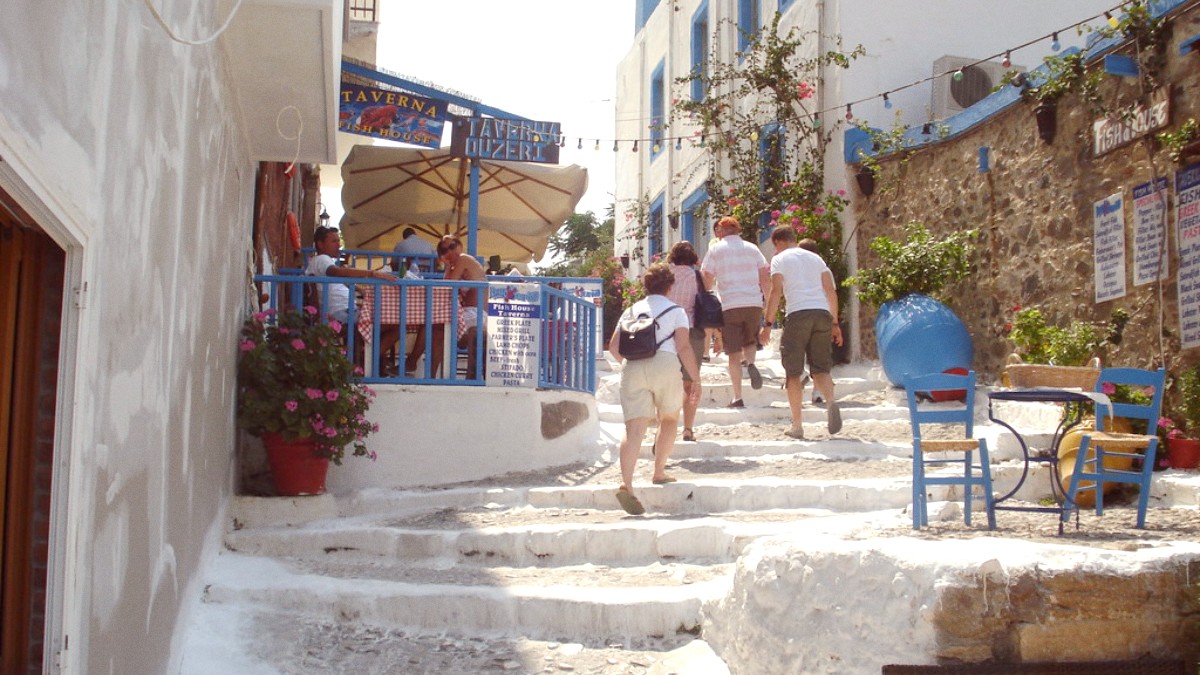
Greece
The island's location places it close to the Turkish coastline. From Kos Town, the city of Bodrum across the narrow strait, just 4 kilometers (2.5 miles) away, is clearly visible. This closeness shaped Kos's history and culture, influencing its trade routes and past conflicts.
The Aegean Sea surrounding Kos stays calm, suitable for swimming, water sports, and boat excursions. The island's landscape changes from flat, fertile plains near Kos Town to mountainous terrain in the interior, showing diverse scenery for exploration.
Its coastal areas feature a mix of sandy and pebble beaches, catering to various preferences. This geographical setting makes Kos Town a base for exploring the island and nearby international destinations.
Kos has a deep history, with evidence of human activity from the Neolithic period. The island is known as the birthplace of Hippocrates, the "father of medicine." Around 460 BC, Hippocrates founded his medical school here, establishing principles of ethics and observation that influence modern medicine.
The ancient healing facility, the Asklepieion, is a testament to this legacy. Located near Kos Town, this sanctuary was for Asclepius, the god of healing. It operated as a place of worship, a sanatorium, and a medical school. Visitors today walk through the ruins, imagining the ancient practices and the pursuit of health once active there. This connection to Hippocrates gives Kos an appeal for those interested in the history of science and well-being.
Early human activity.
First settlers.
Periods of dominance.
Built Neratzia Castle.
Mosques and baths.
A specifically significant period was the rule of the Knights Hospitaller, also known as the Knights of St. John. These crusader knights held the island from the 14th to the 16th centuries. They built the impressive Neratzia Castle, a fortress guarding the entrance to Kos Town's harbor.
This castle stood as a defensive point in the eastern Mediterranean, showing medieval military architecture at its finest. Visitors exploring its walls appreciate the engineering skill and strategic standing it held. The island then came under Italian rule in the early 20th century before uniting with Greece in 1948. Each influence contributed to Kos Town's unique character.
After the Knights, the Ottoman Empire controlled Kos for nearly four centuries, leaving behind mosques and public baths that add to the town's diverse architectural landscape.
More recently, in 2017, a powerful earthquake struck Kos, with damage mainly to older structures in Kos Town. While recovery efforts proceeded, signs of the quake in some historical buildings remind one of the island's dynamic geological setting.
This long and varied history makes Kos Town a destination for continuous discovery for anyone interested in the layers of the past.
A panoramic view of Kos Town with Neratzia Castle in the foreground and the harbor. View Image
Image: Kos Town, Greece by Dimitris Vetsikas (CC BY 2.0)
Enjoy sandy and pebble beaches, perfect for sunbathing and water activities.
Discover ancient ruins and medieval castles scattered across the island.
Explore varied landscapes from flat plains to mountainous terrain.
The Aegean Sea around Kos is generally calm, making it suitable for swimming and water sports. The harbor serves as a hub for boat trips to nearby islands.